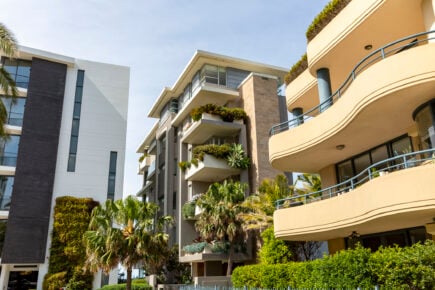Unless you have the right type of mortgage, using your home as a rental property could lead to penalties from your lender as well as other tax issues. Here’s what you should know about staying compliant before charging rent.
Is there a penalty for renting your home if you have an owner-occupied loan?
Yes, you can face a penalty if you have an owner-occupied loan and decide to rent out your entire home. However, you can avoid issues by working with a lender or mortgage broker to change your current loan into an investor home loan.
This is because lenders generally consider investment properties to have a higher risk, so investment loans don’t usually get the same interest rates as owner-occupied loans. If you break your mortgage contract by renting out your owner occupied home, you may attract penalties from your lender which could also lead to a fall in your credit score.
The Australian Taxation Office (ATO) also requires that any rental income be declared; failure to do so can result in fines and charges. Or even a legal investigation in severe cases where the ATO suspects fraud.
🤓 Nerdy Tip
If you intend to rent out your entire property, you must contact your lender to switch your loan and notify the ATO of this change.
Renting a room vs. the entire property
One way to earn passive income while maintaining an owner-occupied loan is to rent a room in your home to a tenant while you continue living there. This approach can satisfy the lender’s requirements without switching to an investment loan.
However, rental income must be declared on your tax return, and renting part of your property may affect your eligibility for the Capital Gains Tax (CGT) main residence exemption when you sell. Keep records of income and receipts for deductible expenses to meet tax obligations.
» MORE: Owner-occupied to an investment loan
Changing your owner-occupied loan
If you decide to change your an owner-occupied loan into an investor loan, there are a few steps to consider first.
Make sure you can afford a switch
Investor home loans often come with higher interest rates, which will increase your repayments as rates rise. You’ll likely also face additional costs, like property management fees, potential renovations, and higher living expenses.
Refinance
Refinancing is the process of paying off your existing loan and replacing it with another. You will need an investor loan if you want to rent out your entire property. You can refinance with your current lender or choose a new one with better interest rates or other attractive loan features.
When you meet with your lender, they will review your options, and you’ll need to provide proof that you no longer intend to live in the property, such as a rental contract where you intend to live, utility bills addressed to you at another location or formal ID with another address.
Update your address with the ATO
You should also update your main residence with the ATO using MyGov, by phone or by post. This is to ensure transparency with the ATO about which property is generating assessable income and which is your main residence.
What to consider before making the switch
Interest rates and rent
When you switch from an owner-occupied loan to an investor loan, you will likely pay a higher interest rate. You’ll also need to set a rental rate that covers your mortgage costs and other expenses while still making some profit.
Vacancies
Tenant turnover and vacancies are inevitable. Unless you only plan to rent a room, you’ll need to assess whether you can afford your investment property without rental income, especially during long-term vacancies.
If you rent out the entire property, you’ll also need to decide whether to buy or rent elsewhere. This could mean either juggling dual housing costs or rentvesting (living in a rental while earning income from an investment property you own).
Whatever you choose, ensure it’s an option your budget can handle without depending entirely on steady rental income.
» MORE: How much rent can you afford?
Ongoing costs
As an investor, you have to budget for expenses such as:
- council and water rates
- building insurance
- landlord insurance
- body corporate fees
- land tax
- property management fees (if you use an agent)
- repairs and maintenance costs.
These expenses can add up quickly, so it’s essential to plan accordingly to avoid mortgage stress.
» MORE: Costs to know when buying an investment property
Tax deductions and gearing strategy
Investors may qualify for tax deductions that can help offset some of the ongoing costs of property ownership. It’s important to understand which expenses are deductible and how to declare them to the ATO correctly.
Furthermore, consider your investment strategy. Choosing options such as interest only loans and deciding between positive gearing (where rental income exceeds expenses) or negative gearing (where expenses exceed rental income, potentially reducing taxable income) will influence your cash flow and tax outcomes.
DIVE EVEN DEEPER

Living In A Private Rental: What To Know
Renters may enjoy having a streamlined relationship with a private landlord, but before signing a lease, consider the pros and cons of living at a private rental.

What Is A Rental Bond?
Beyond weekly payments, one of the largest costs associated with renting is likely your rental bond.

Do You Need a Deposit For an Investment Property?
It’s possible to get an investor loan with a deposit as low as 5% of the purchase price, but you may pay LMI as well as a higher interest rate.


